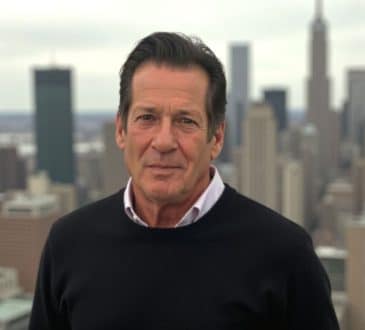Starbucks’ New CEO, Brian Niccol, Aims to Revive the Coffeehouse Experience

As Starbucks faces declining sales and shifts towards a more digital business model, the company’s new CEO, Brian Niccol, has unveiled a plan to steer the brand back to its roots. His strategy? Comfortable chairs and a return to the traditional coffeehouse atmosphere that made Starbucks a community hub.
On just his second day in the role, Niccol wrote a letter to employees and customers outlining his vision to revive Starbucks as a “community coffeehouse.” He emphasized the importance of comfortable seating, thoughtful design, and a clearer separation between “to-go” and “for-here” orders. “There’s a shared sense that we have drifted from our core,” Niccol admitted. “We are committed to elevating the in-store experience — ensuring that our spaces reflect the sights, smells, and sounds that define Starbucks.”
Niccol is no stranger to turnarounds, having led successful revamps at both Chipotle and Taco Bell. Now, as Starbucks’ fourth CEO in two years, he takes charge during a period of slumping sales and mounting pressure from employees and investors. The company has seen a decline in revenue over the past two quarters, with customers citing rising prices, slow app order pickups, and uninspired food options as key frustrations. Additionally, a wave of union organizing has swept across stores, fueled by dissatisfaction with working conditions, wages, and benefits.
Starbucks is undergoing a significant transformation, moving away from its traditional brick-and-mortar focus to become more reliant on mobile orders and drive-thrus. Currently, over 70% of its sales in the U.S. come through these channels at its roughly 9,500 company-operated stores.
In his letter, Niccol acknowledged the challenges, saying that after visiting numerous stores and speaking with both employees and customers, he realized that many locations feel too “transactional.” He noted that overwhelming menus, inconsistent product quality, long wait times, and chaotic handoffs are contributing to a less enjoyable customer experience.
A key part of his plan is to empower baristas by providing them with the tools and time they need to craft quality drinks. Many employees have expressed concerns that mobile orders often pile up, leading to overwhelming workloads and rushed service.
Niccol’s leadership has attracted some attention for his decision not to relocate permanently to Seattle, where Starbucks is headquartered. Instead, he commutes from his home in Newport Beach, California, using a corporate jet. However, the company stated that Niccol will split his time between stores, the Seattle headquarters, and Starbucks employees around the world, ensuring a hands-on approach to the company’s revival.
With this focus on recapturing the essence of the coffeehouse experience, Niccol aims to rejuvenate Starbucks and reconnect with both customers and employees, bringing the brand back to its foundational roots.
Have you read?
The Daunting CEO Agenda: What it Means for Communications.
How to Write Attractive Book Proposals? Jennifer Scott Pens Some Tips.
The Psychology Tool Leaders Can Use to Increase Productivity.
Generative AI Offers Major Benefits for Independent Workers.
7 things I didn’t know about flying business class.
Bring the best of the CEOWORLD magazine's global journalism to audiences in the United States and around the world. - Add CEOWORLD magazine to your Google News feed.
Follow CEOWORLD magazine headlines on: Google News, LinkedIn, Twitter, and Facebook.
Copyright 2025 The CEOWORLD magazine. All rights reserved. This material (and any extract from it) must not be copied, redistributed or placed on any website, without CEOWORLD magazine' prior written consent. For media queries, please contact: info@ceoworld.biz








